 |
 |
 |
Video Game Training to Improve Eye Gaze Behavior
in Children with Autism
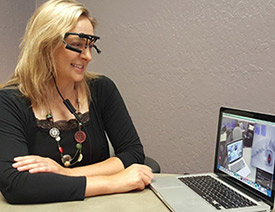 Researchers at UC San Diego have devised experiments to improve the motor planning and execution capabilities of children with autism. TDLC investigator Leanne Chukoskie is part of this team! Using eye tracking technology, they collaborated with a developer to create a set of video games which use eye gaze as the controller to steer spaceships, blow up mushrooms and play whack-a-mole. So far, preliminary results have been promising. Subjects have shown improvements in other fixation and spatial attention tasks after daily videogame training. Photo: Leanne Chukoskie wearing the eye tracking headset (NSF Highlight 2017) More Researchers at UC San Diego have devised experiments to improve the motor planning and execution capabilities of children with autism. TDLC investigator Leanne Chukoskie is part of this team! Using eye tracking technology, they collaborated with a developer to create a set of video games which use eye gaze as the controller to steer spaceships, blow up mushrooms and play whack-a-mole. So far, preliminary results have been promising. Subjects have shown improvements in other fixation and spatial attention tasks after daily videogame training. Photo: Leanne Chukoskie wearing the eye tracking headset (NSF Highlight 2017) More 
|
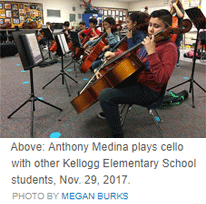 What Learning Looks Like: Creating A Well-Tuned Orchestra In Your Head What Learning Looks Like: Creating A Well-Tuned Orchestra In Your Head
TDLC's Dr. John Iversen is featured on KPBS, where he discusses his five-year study on the brains of children who play music in the San Diego Youth Symphony's Community Opus after-school program. Dr. Iversen is just beginning to analyze his data, but early findings suggest playing music is linked to stronger language development!
Read more (KPBS 12/12/17) (KPBS 12/12/17)
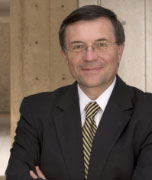 Salk neuroscientist receives new NSF award to model the brain Salk neuroscientist receives new NSF award to model the brain
TDLC Co-Director Dr. Terry Sejnowski, together with the California Institute of Technology, will receive over $1 million over 3 years from the National Science Foundation to pursue advanced modeling of the brain. "We will test our models on humans with tasks that require fast reflexes and long-range planning," Dr. Sejnowski explains, "such as riding a mountain bike down a bumpy, twisting trail." (Photo credit: Salk Institute). Read more!
Congratulations Dr. Terry Sejnowski, for being elected as a National Academy of Inventors (NAI) Fellow! (12/2017) More about the NAI Fellows Program
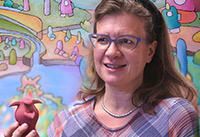 Visual intelligence is not the same as IQ Visual intelligence is not the same as IQ
A new study by TDLC's Dr. Isabel Gauthier and her team shows for the first time that there is a broad range of differences in people’s visual ability and that these variations are not associated with individuals’ general intelligence, or IQ. Click here to read more!
(Research News at Vanderbilt, 11/7/17) Photo credit: Vanderbilt
|
|

|
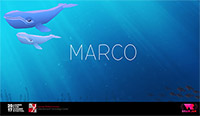 Using game-based technology to enhance real-world interpretation of experimental results Using game-based technology to enhance real-world interpretation of experimental results
Research on how the brain combination of visual, auditory and movement information are typically conducted in a tightly controlled albeit rather impoverished environment. Virtual reality (VR) presents a unique opportunity to maintain stimulus control in a way that places the observer in a truly immersive environment. (NSF Highlight 2017) Click here to read more about this and other TDLC 2017 Highlights 
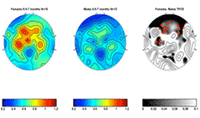 Brain waves during sleep in human infants are differentially associated with measures of language development in boys and girls Brain waves during sleep in human infants are differentially associated with measures of language development in boys and girls
Temporal Dynamics of Learning Center researchers, Drs. Sue Peters and April Benasich, at the Center for Molecular and Behavioral Neuroscience, Rutgers University-Newark, have shown that brain rhythms in the sleep spindle range, differ between boys and girls, this difference is prominent on the left side of the brain, and is associated with language measures. (NSF Highlight 2017). Click here to read more about this and other TDLC 2017 Highlights 
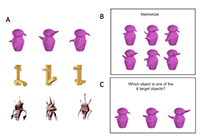 Domain-specific and domain-general individual differences in visual object recognition Domain-specific and domain-general individual differences in visual object recognition
Researchers found that performance on Novel Object Memory Tests (NOMTs) varied just as much as on familiar object, but showed more shared variance across each other (about 25%) than is typically observed among familiar object tests (about 11%). Importantly, they verified that the ability measured in the NOMTs is not explained by cognitive skills, because shared variance between NOMTs remained unchanged after controlling for performance on various measures of general intelligence. (NSF Highlight 2017). Click here to read more about this and other TDLC 2017 Highlights 
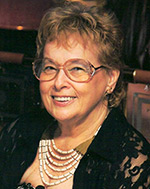 In Appreciation In Appreciation
Carolan Gladden passed away in December 2017. She maintained a life full of passion, liveliness, creativity, purpose, and action for 80+ years and I don't think there was an alternative way of being for her. She was such a force for TDLC, compiling and editing our reports, wrangling with our data-base, sending humorous reminders to our members, and thoroughly enjoying writing great articles for the newsletter. I am forever grateful for all of the demanding work she did for us and for her wizardry in making the process entertaining.
Here is to Carolan and her fascinating life journey - I am so glad that we were able to hear a few of her stories and experience her vibrance!
- Andrea Chiba
|
|
|
| |
| |
|
This message was sent from:
The Temporal Dynamics of Learning Center (TDLC.UCSD.EDU),
University of California, San Diego,
9500 Gilman Drive, La Jolla, CA 92093
To learn more about TDLC, please visit us on the web at: TDLC.UCSD.EDU
Please contact webmaster@tdlc.ucsd.edu to unsubscribe.
TDLC is a Science of Learning Center (SLC),
one of six SLCs funded by the National Science Foundation. NSF grant #SMA 1041755
|
|
 |
 |
January 2018 |
|
| |
|
 |
 |
Advances to brain-interface technology provide clearer insight into visual system
TDLC investigators Drs. Michael Tarr and Marlene Behrmann participated a the study with other Carnegie Mellon University engineers and cognitive neuroscientists that demonstrated that a new high-density EEG can capture the brain's neural activity at a higher spatial resolution than ever before. (Science Daily, 12/4/17) More
|
 |
SMART: Facial recognition for molecular structures
An interdisciplinary team of researchers at UC San Diego has developed a method to identify the molecular structures of natural products that is faster and more accurate than existing methods. Drs. Zhang and Gerwick teamed up with TDLC's Dr. Gary Cottrell for the project. (Scientific Reports, 10/31/17) More
|
 |
IBM Research and UC San Diego Collaborate to Advance the Use of Artificial Intelligence for Healthy Living
TDLC investigator Virginia de Sa, Ph.D., will lead the Healthy Aging project with Laurel Riek, Ph.D., and TDLC co-Director Andrea Chiba, Ph.D., is part of the team. (9/28/17) More
|
 |
New kinds of brain cells revealed
"Salk Institute and UC San Diego scientists have, for the first time, profiled chemical modifications of DNA molecules in individual neurons." Dr. Terry Sejnowski is part of the research team. (Salk News, 8/10/17)
More |
 |
Spacing out instruction for more effective learning:
Revisiting material after days and weeks helps us remember better
This article includes a study by TDLC's Drs. Mozer and Pashler (with colleagues) that shows that spacing out learning over time "has the potential to double retention over timescales relevant to school or college courses." (npj Science of Learning Community Digest, 8/8/17) More
|

|

Your gut is closer to your brain than it appears!
Studies have shown that some of the bacteria in your body, most of them living in your gut, can protect your brain from different inflammatory diseases such as Multiple Sclerosis (MS). Read more from Knowing Neurons.
|
|
|
|
 |

![]()
